According to new forecasts, Croatian coastal towns will be almost uninhabitable in several decades or less.
The recent UN report on the Earth's Atmospheric Pollution Rate found that humanity not only increased CO2 levels to the highest in human history last year, but that it was done faster than ever before. With such [devastating] trends and the lobbying of oil, gas and coal companies, which invest billions of euros and dollars in promoting the further use of fossil fuels, the world is already on track for surpassing the global-warming limit of 2 °C, the target which the world nations agreed upon by the Paris Climate Agreement, let alone to stop at 1.5 °C, deemed as a extremely ambitious goal, reports Express on November 4, 2017.
The way things are going, even according to the most optimistic predictions, the Earth will be 3°C warmer by the year 2100. The latest article concerning this topic, published in the Proceedings of the National Academy of Sciences, states that in such scenario, the sea level will increase between 4.3 and 9.9 meters world-wide by the end of the century. Five years ago, official forecasts have predicted the rise of sea level by 1.5 metres, which was considered extreme at that time. Today, even the more moderate forecasts fade in comparison and predict far worse scenarios and much higher numbers of the sea level rising.
As far as Croatia is concerned, the following illustrations provide a glimpse of what the Adriatic coast will look like in the case of the 9-metre-rise of the sea level, which is in line with the PNAS report.
Split and Kaštela Bay

Even with the sea level rising by only one or two meters, all the waterfronts and rivas on the Adriatic will be flooded. In case of a 4-metre rise, almost every old city core by the Adriatic sea will be flooded, and if the sea level increases by 9 metres, well... Trogir will become a major tourist attraction for divers, along with the majority of Solin, Kaštela and parts of Split, including Poljud, Diocletian's palace, Lore, the port and bus station in Split. South of Split, the sea will penetrate tens of kilometres into Cetina river, erasing most of Omiš as well as half of Makarska from the map.
Neretva Valley
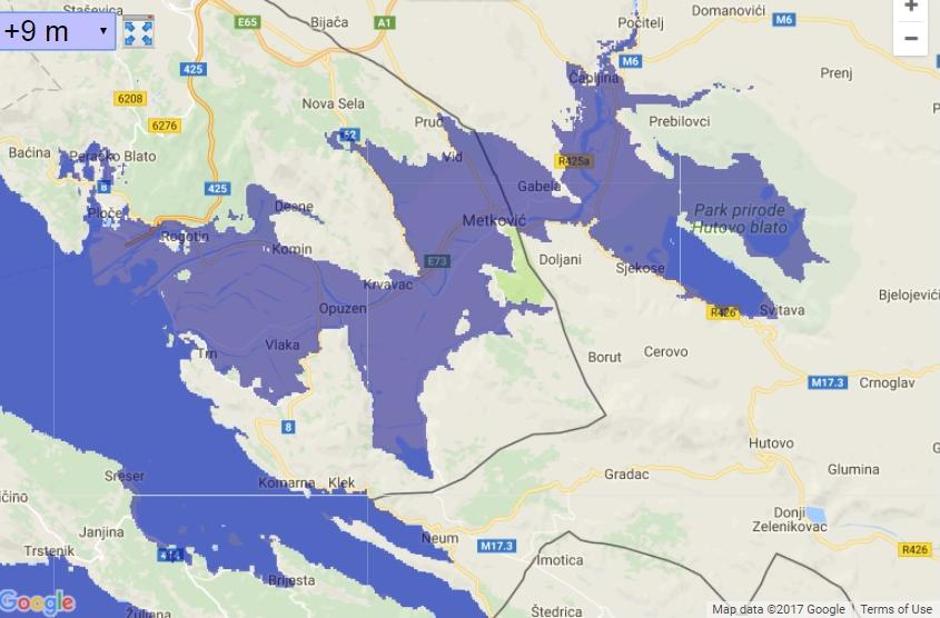
This is Croatia's most vulnerable area to climate change. In the case the sea level rises by 4 metres, Opuzen, Metković and Ploče will disappear, and Čapljina in Bosnia and Herzegovina will get its own riviera. But the sea will not stop there, it will flood Čapljina, reaching halfway down to Mostar, where any form of agriculture would being impossible under such conditions. Ston and the most populous parts of all Croatian islands are also in danger of completely vanishing with the future sea surges rising with the global temperatures.
Dubrovnik
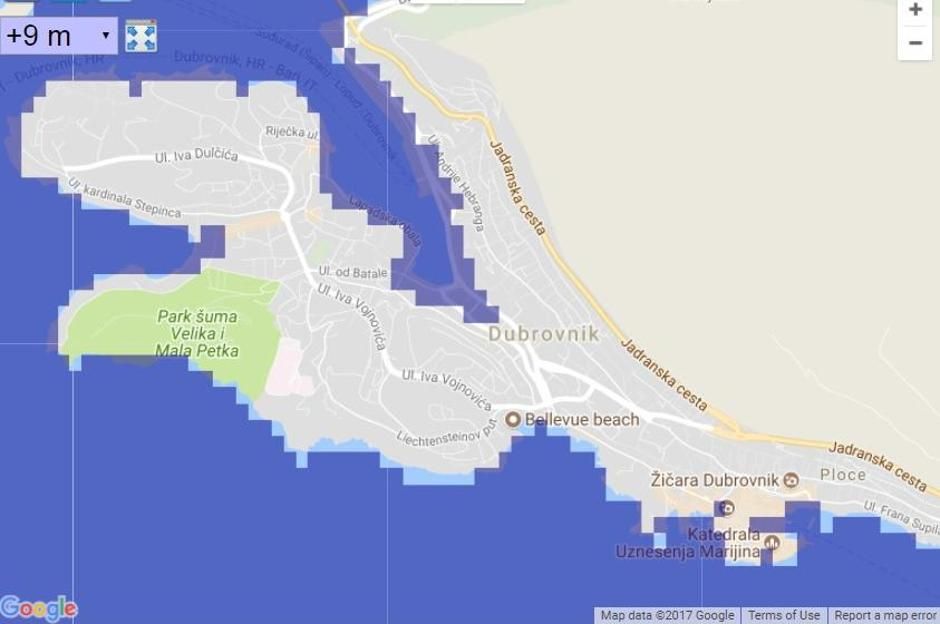
Most of the Old Town of Dubrovnik will be under water, along with the city harbour, which will disappear even with the sea level rising by 'only' 1.5 metres. Cavtat and Kupari will also disappear.
Zadar
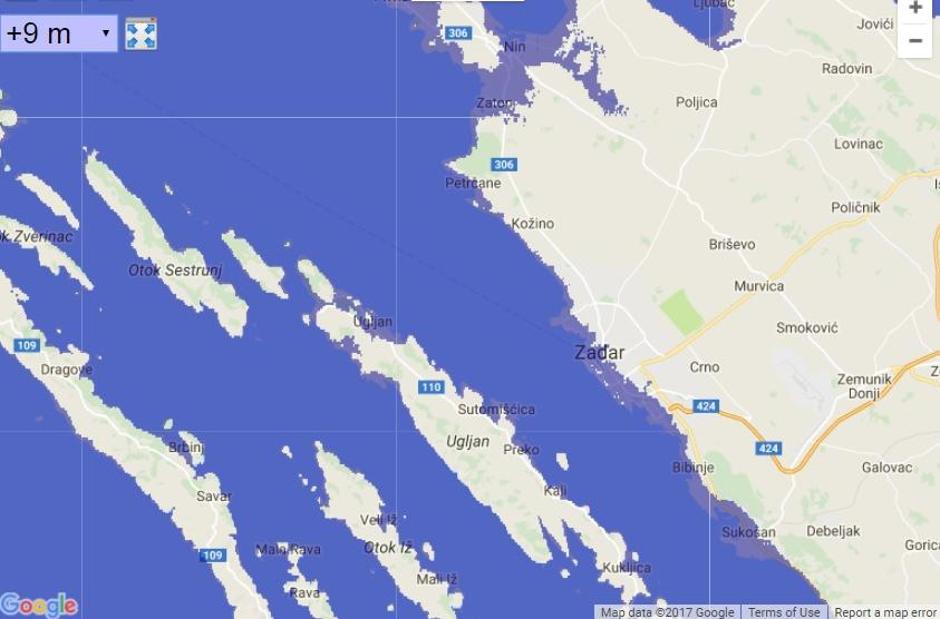
With an increase of the sea level by 9 metres, the city of Zadar will almost cease to exist. The parts not yet flooded by the sea, will suffer damages from fierce almost tornado-like storms. Nin, Bibinje, most of Šiibenik and Skradin are also doomed to drown. Mouths of the nearby rivers will turn into large bays.
Rijeka
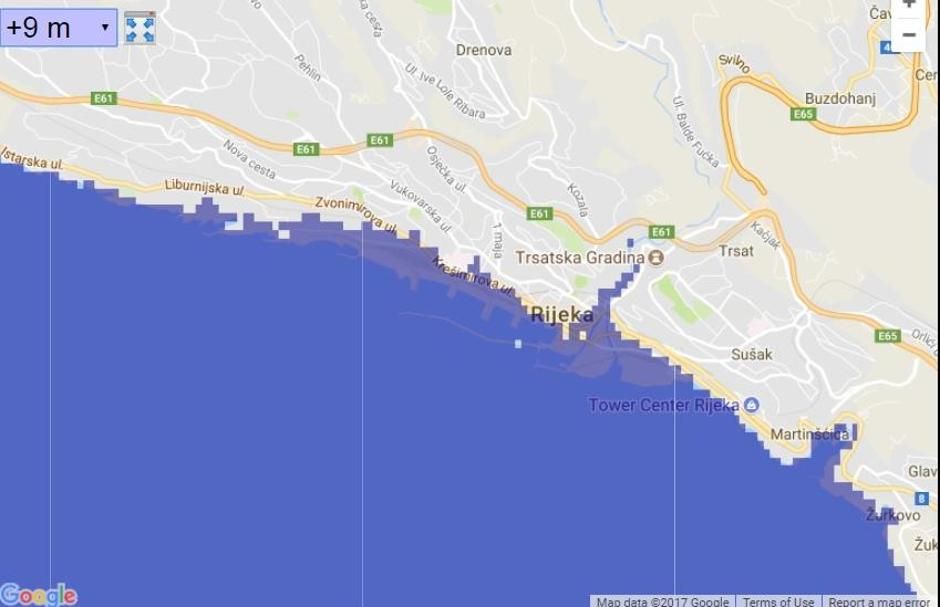
The Trsat fortress will rise from the sea shore like a beacon, while almost everything below it will be under water. The rising sea surge will also swallow the most part of the hospital complex and practically every single monument of this city, which will remain above ground only in people’s memories and their old photos.
Pula
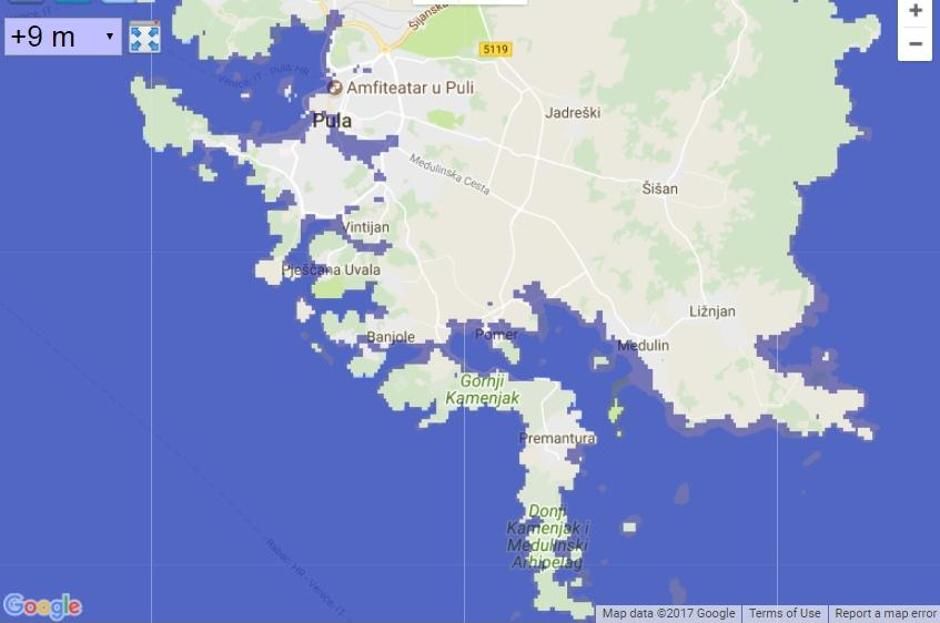
Pula also faces similar tragic fate. Due to the configuration of the terrain and with the sea levels rising more than 9 metres, parts of Pula will be cut off and transformed into several islands. The symbol of the city - Arena will be surrounded by the shallow water. In this dark but likely scenario, half of the city will be flooded when the sea is calm, whereas when the south wind blows and what-will-be-considered-usual hurricane storm hits, practically everything will be underwater.
Istria awaits similar bleak future. Raša will no longer be a river, but a deep sea bay, while Poreč, Vrsar, Novigrad and Rovinj will almost completely disappear. Motovun will be a lovely coastal town by the sea, and Savudrija and Piran Bay will even flood Plovanija and Kaštel border crossings.
Translated from Express.hr
Photos: Google Earth


